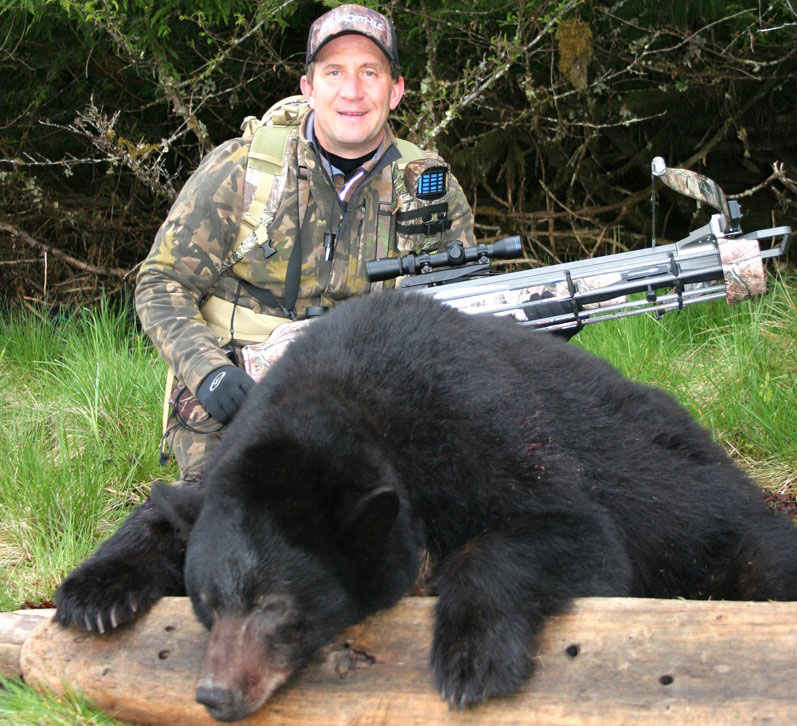The smallest of North America’s bears (an average male weighs approximately 180 to 200 pounds in the spring), the black bear (Ursus americanus) occurs over most of the forested areas of the Alaska, though they are not found on the Seward Peninsula, on the Yukon-Kuskokwim Delta or north of the Brooks Range. According to ADF&G, they are also absent from the Alaska Peninsula south of Lake Iliamna, as well asfrom some of the large islands within the Gulf of Alaska, with the most notable being Kodiak, Montague and Hinchinbrook islands. In southeast Alaska, black bears inhabit most islands, except Admiralty, Baranof, Chichagof and Kruzof (all four are home to brown bears). Both brown and black bears occur on the southeastern mainland.
The color of this bear over its entire range varies from jet black to white, though the latter iteration is very rare and occurs only on Kermode Island and vicinity in British Columbia. In Alaska three colors are common for black bears, black being the most obvious and oft-encountered color. Still, brown or cinnamon bears are seen quite frequently both in southcentral Alaska and on the southeastern mainland. Another rarity, the blue (glacier) phase may be seen in the Yakutat area and has been reported in other parts of southeast Alaska as well.
And when color doesn’t do the trick, black bears are most easily distinguished from brown bears by their straight facial profile and their claws, which are sharply curved and seldom over 1½ inches in length.
In some areas of Alaska, black bears are a traditional subsistence food, and the species was also classified as a furbearer at one time, and they were heavily utilized as might be expected. Now, however, there is a growing appreciation for them as a meat and trophy animal and sport-hunting of the species has grown considerably.
And again according to ADF&G, the best areas for hunting black bears are probably from the tidal areas in Prince William Sound southward through the panhandle of Alaska. In these areas, bears are most typically spotted from boats as they forage on the beach. Early May through early June is usually the best time for such hunting, when the pelts of bears taken before they start to rub make beautiful trophies.

